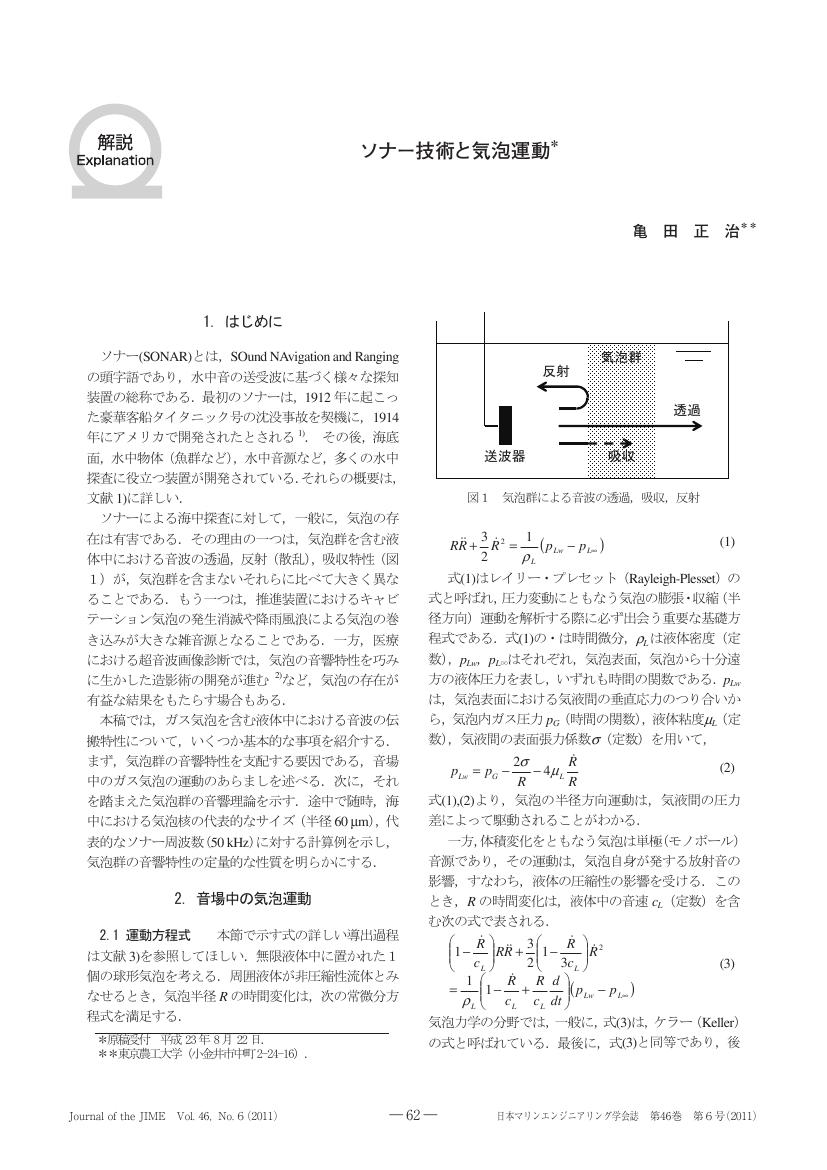2 0 0 0 OA 外部圧縮型超音速インテーク性能に及ぼすスリット抽気の影響
- 著者
- 西澤 宇一 亀田 正治 渡辺 安
- 出版者
- 一般社団法人 日本航空宇宙学会
- 雑誌
- 日本航空宇宙学会論文集 (ISSN:13446460)
- 巻号頁・発行日
- vol.56, no.654, pp.315-323, 2008 (Released:2008-08-27)
- 参考文献数
- 12
The performance of a two-dimensional Mach 1.64 external compression air intake is investigated by computational fluid dynamics. The intake model consists of a 10-degree wedge and a subsonic diffuser. The flow in and around the intake with different configurations of the slit at the diffuser entrance is calculated to examine the effect of the configurations for pressure recovery and stability of the shock system. The numerical results indicate that the natural bleed fairly improves the intake performance at subcritical operation: It improves the maximum pressure recovery and the tolerance of the mass flow rate through the diffuser to guarantee the stability of the shock. The bleed mass flow rate strongly depends on the slit configuration. Large bleed mass flow rate increases the tolerance of the diffuser mass flow rate for the shock stability. However, the presence of the slit provides no gain in efficiency of the intake at supercritical operation.
1 0 0 0 OA ソナー技術と気泡運動
- 著者
- 亀田 正治
- 出版者
- 公益社団法人 日本マリンエンジニアリング学会
- 雑誌
- マリンエンジニアリング (ISSN:13461427)
- 巻号頁・発行日
- vol.46, no.6, pp.867-872, 2011 (Released:2013-10-23)
- 参考文献数
- 18
1 0 0 0 気泡を含む超高粘度流体のダイナミクス
気泡を含む流体に関する多分野融合問題,具体的には,噴火様式を決定付ける要因とされる「マグマの破砕」現象の解明に取り組んだ.研究手法には,高い再現性と可視化撮影の実現性を重視して「マグマ模擬材料による常温室内実験」を採用した.模擬材料は,「水あめ」に過酸化水素水と二酸化マンガンを加え,触媒反応により酸素気泡を得たものである.この模擬材料は,マグマの持つ特徴である「超高粘度」「高剛性」「Maxwell型粘弾性」を併せ持ち,発泡マグマと同様に直径数10μmの気泡を大量に含んでいる.また,粘度,ボイド率も幅広い範囲で調整ができる.実験では,減圧による発泡材料の破砕過程を高速度撮影により詳しく調べた.その結果,十分固体的な状態におけるマグマの破砕は,破砕に必要な臨界差応力に達する時間tdecが特性をつかさどることを見出した.また,材料の固体流体遷移を支配する緩和時間trとの比(デボラ数: tr/tdec)を指標として,破砕に必要な臨界差応力に対するレオロジーの影響を詳しく調べた結果,臨界デボラ数(10)以上では,差応力はほぼ一定になること,また,臨界デボラ数を下回ると,次第に差応力が大きくなることが分かった.つぎに,減圧開始から破砕にいたるまでの時間tfに対するレオロジーの影響を評価したところ,デボラ数に反比例することがわかった.さらに,その最小値は減圧特性時間tdecによって,その最大値は,材料内の気泡が膨張を開始する特性時間tvに支配されることが分かった.これまでの成果を取りまとめたものを,雑誌論文2編,図書1巻として公表した
1 0 0 0 気体圧力変動を用いた単一サブミリ気泡発生法(流体工学,流体機械)
- 著者
- 城田 農 真田 俊之 荒田 康弘 渡部 正夫 亀田 正治
- 出版者
- 一般社団法人日本機械学会
- 雑誌
- 日本機械学會論文集. B編 (ISSN:03875016)
- 巻号頁・発行日
- vol.73, no.726, pp.467-473, 2007-02-25
- 被引用文献数
- 3
The mechanism of a bubble production method using controlled gas pressure fluctuation, originally developed by Kariyasaki and Osaka [Trans. JSME, Series B, Vol.68, No.674, (2002)1, is further investigated using high-speed photography. We found out more appropriate pressure fluctuation than that of Kariyasaki and Osaka in producing single bubble. The radius of bubbles can be varied from about 0.3 to 0.8 mm with extremely small standard deviation of less than 1μm. Shrinking motion of a capillary bridge connecting a bubble and a nozzle was observed in detail. Force balance on a growing bubble which is based on a spherical bubble formation model is also estimated. As a result, we reveal that when gas pressure is decreased the capillary bridge is sucked down into a nozzle and upward added mass force is applied on a bubble, both of which cause the detachment of a bubble from a nozzle.
